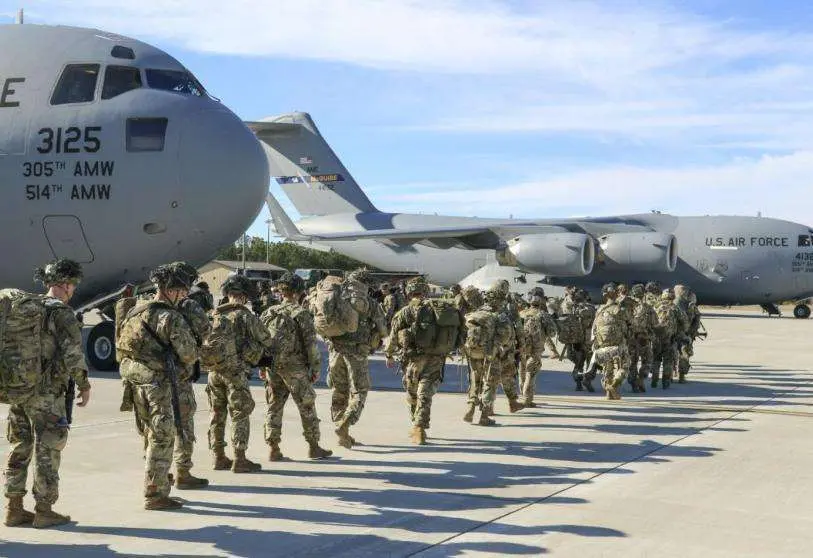Morocco reduces its arms imports despite tensions incited by Algeria

As of 13 March, the freely accessible Stockholm International Peace Research Institute (SIPRI) Arms Transfers Database includes updated data on transfers of major arms between 1950 and 2022, replacing all previous data on arms transfers published by SIPRI. Based on last year's data, this new fact sheet presents global trends in arms exports and imports, and highlights some issues related to arms transfers. SIPRI, in its annual report, crumbles that arms imports to Europe are rising sharply, largely "due to tensions between Russia and most European countries", the report states.
The Stockholm International Peace Research Institute is a strategic think tank founded in 1966 to mark 150 years of uninterrupted peace in Sweden. SIPRI conducts scientific studies on cooperation and conflict in order to contribute to the understanding of the conditions necessary for the peaceful resolution of conflicts and the maintenance of lasting peace. Through its studies, SIPRI makes public information on arms development, military expenditure, arms production and trade, disarmament, conflict, conflict prevention and international security. Its findings are disseminated through books, research reports and other mechanisms such as its official website.

Specifically, it has increased by 93% in one year, with the European continent being the only region in the world where purchases have increased, as the trend in the rest of the world market is downward. The volume of international transfers of major arms in 2018-22 was 5.1% lower than in 2013-17 and 4.8% higher than in 2008-12. At the same time, Ukraine has become the third largest arms recipient in the world, behind only Qatar and India. This is due to direct aid from the Western bloc to defend itself against Russia's offensives. Russia accounts for 31% of Europe's arms imports and 8 % of the world's arms trade, according to SIPRI.
On the other hand, Europe's increase in arms purchases is also due in part to increased military spending by several European countries such as Poland and Norway, states that are further accelerating the procurement of weapons stockpiles. Of the 29 countries that have sent arms support to Ukraine, the US accounted for 35% of the total, followed by Poland (17%), the UK (10%) and the Czech Republic (4.4%). "Many of the weapons supplied in 2022 were second-hand from existing inventories, including 228 artillery pieces, approximately 5,000 guided artillery rockets from the US, 280 tanks from Poland and more than 7,000 anti-tank missiles from the UK," the institute notes.

The war in Ukraine had only a limited impact on the total volume of arms transfers in 2018-22, but Ukraine became a major arms importer in 2022. "The invasion has actually triggered a significant rise in arms demand in Europe, which has not yet shown its full strength and will likely lead to further import surges," said Pieter Wezeman, co-author of the annual report for more than three decades. The top five arms exporters in 2018-22 were the United States, Russia, France, China and Germany. Together, they supplied 76% of global arms exports in 2018-22. US arms exports accounted for 40% of the global total in 2018-22 and were 14% higher than in 2013-17.
French arms exports increased by 44% between 2013-17 and 2018-22, while Russian (-31%), Chinese (-23%) and German (-35%) arms exports decreased. In addition, most European states substantially increased their arms import orders and the war will have significant ramifications for future arms trade relations between suppliers and recipients globally. The five largest arms importers in 2018-22 were India, Saudi Arabia, Qatar, Australia and China. The latter is arming massively as it increasingly produces locally.

Like the previous report, SIPRI's 2022 publication also reported a decline in major arms imports by African states. Major arms imports by African states fell by 40% between 2013-17 and 2018-22, which was mainly due to declines in arms imports by the region's two largest importers, Algeria (-58%) and Morocco (-30%). Africa's main suppliers in 2018-22 were Russia, which accounted for 40% of African imports of major arms, the United States (16%), followed by China (9.8%) and fourthly France with (7.6%). Sub-Saharan African states accounted for 2.0% of total global imports of major arms in 2018-22. The three largest arms importers in the sub-region in 2018-22 were Angola, Nigeria and Mali.
In the Sahel region, Russia has overtaken China as an arms exporter. An example of this is Mali, which previously received arms from several countries, including France and the US. After the coups in Mali in 2020 and 2021, both countries halted their exports to Mali, while Russia expanded them. Political changes have consequences for arms cooperation, as the case of Turkey shows: from 2013 to 2017, the NATO country was the seventh largest buyer of US arms. In the rest of the world, during the periods 2013-2017 and 2018-2022, the global arms trade fell by 5.1% while Europe imported 47% more arms during this time.
Americas Coordinator: José Antonio Sierra.








